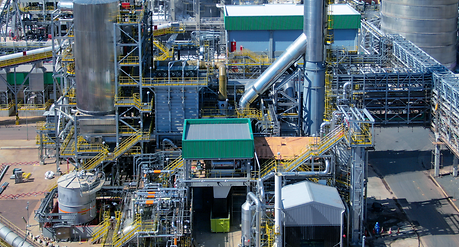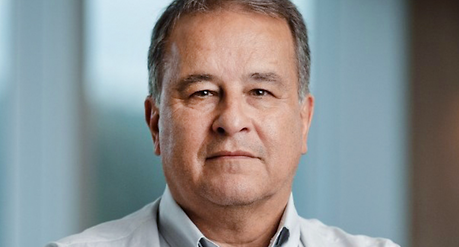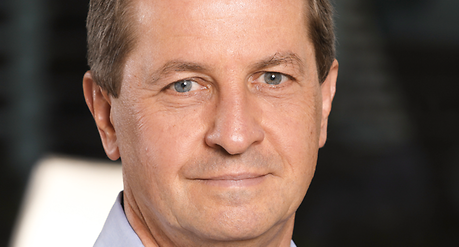“We are constantly looking for ways of making use of the by-products from our mills.”
João Braga, Project Director, Klabin
By far the largest part of the Amazon rainforest is located in Brazil. It offers enormous bio-diversity and stores huge amounts of CO₂. The rainforest plays a central role in combating global warming.
The Brazilian company Klabin has started up an innovative sulfuric acid plant supplied by ANDRITZ – SulfoLoop enables the production of commercial-grade sulfuric acid from the mill’s odorous gases. This solution is completely new to the pulp and paper industry.
SulfoLoop strongly supports Klabin in its circular economy initiatives. By producing sulfuric acid in-house, the costs for externally purchased sulfuric acid are much lower. In addition, indirect CO₂ emissions are reduced: Fewer truck journeys are needed to transport sulfuric acid to the mill.
The term circular economy is often mentioned when talking about sustainable modernization of industrial production. And it is also an ecological idea to close material and energy loops completely and so skillfully that energy input, emissions and waste are reduced to a minimum – ideally coming close to zero in the final stage. But how can this good idea become reality?
At the Ortigueira mill operated by pulp and paper maker Klabin in southern Brazil, we can observe how operations are drawing closer to the circular economy step by step. Here, the first plant in the pulp industry worldwide will produce commercial-grade, concentrated sulfuric acid from concentrated, odorous gases, which are generated at the mill itself. ANDRITZ was responsible for engineering, procurement, construction and commissioning of the plant at the Klabin mill and has been one of the Brazilian company’s main suppliers for many years.
Klabin currently produces 100 tons of high-purity sulfuric acid daily. The Ortigueira plant is the world‘s first facility in the pulp industry to produce commercial-grade, concentrated sulfuric acid from gases generated at the mill itself.
João Braga, Project Director, Klabin
João Braga is Klabin’s director of engineering and projects and has been with the company for more than 40 years.
Francisco Razzolini has been working at Klabin since 1985 and is the executive director responsible for research and development, innovation, sustainability and automation technology.
At the moment, around 100 tons of high-purity sulfuric acid are being produced per day. This figure is to increase by another 50% in the course of 2023. The plant will then supply the sulfuric acid essential to the pulp production process to pulp lines “Puma I” and “Puma II” at the Ortigueira mill and also to the neighboring Klabin mill 25 kilometers away – acid that previously had to be delivered under strict safety precautions with high labor input and high emissions.
Fewer trucks, lower CO₂ emissions “We are constantly looking for ways of making use of the by-products produced in our mills,” says Klabin’s Projects Director, João Braga. Oxygen, sodium chlorate and hydrogen are recovered in Ortigueira, and so are methanol, turpentine and tall oil. “But the sulfurous gases are definitely among the most important by-products,” Braga continues. “That’s why the sulfuric acid plant is a particularly good example of how we are closing our material loops with the aid of technology.”
The ANDRITZ SulfoLoop solution creates an internal sulfuric acid production cycle in a pulp mill, which decreases the costs for make-up chemicals and reduces sulfur effluents. This enhances both environmental and economic performance of the kraft pulping process. As the sulfuric acid plant meets stringent air emission limits, the process significantly improves the overall footprint of the pulp mill.
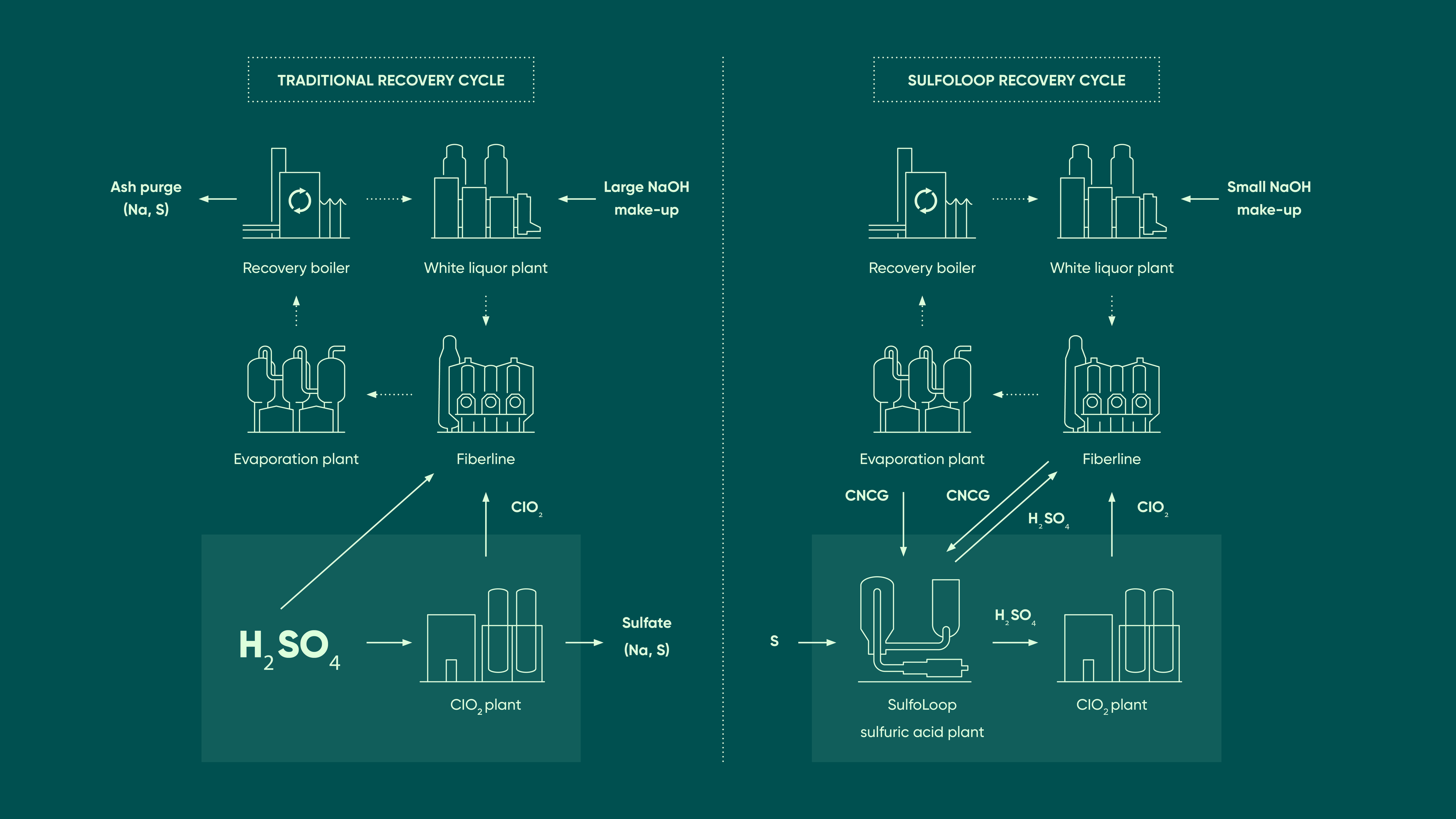
João Braga, Project Director, Klabin
Braga says that the plant has several advantages: First of all, Klabin no longer has to purchase any sulfuric acid and thus is not affected by any price increases or delivery problems. Secondly, as the most significant sulfur-rich stream is used to replace the purchased sulfuric acid, it allows the mill to recycle more streams containing sulfur and sodium, avoiding effluents. “And thirdly, we can reduce truck transport, which was vital to bring the sulfuric acid and sodium hydroxide to the mill, by up to 85%,” João Braga continues. Instead of having some five to six 30-ton trucks that have to cover 500 kilometers every day, only one is needed, thus saving a comparable amount of fuel and CO₂ emissions. “We are very pleased with the result,” says João Braga. Production is stable, efficient, and meeting all targets set.
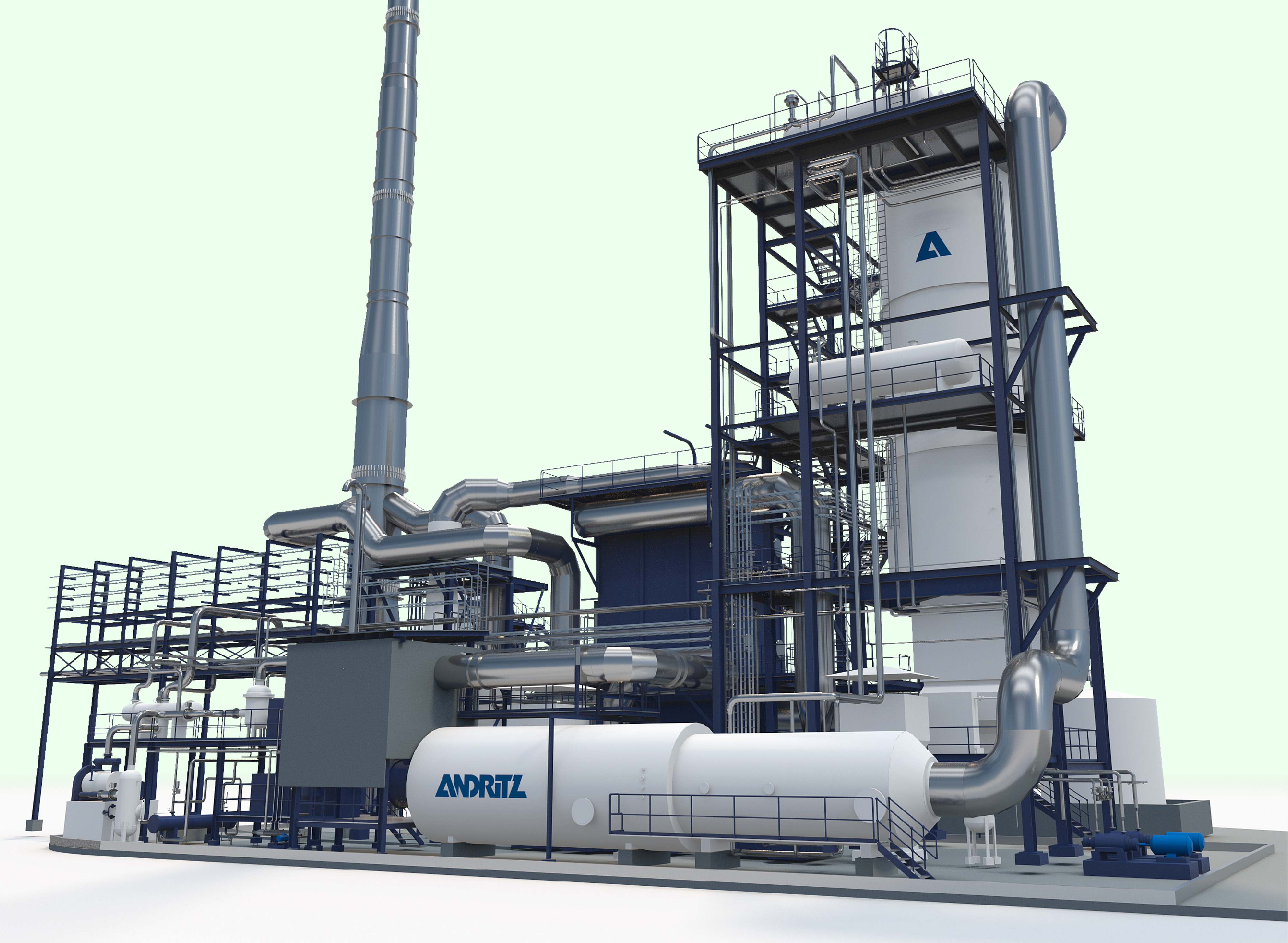
The technology of the new plant is based on the wet-gas sulfuric acid process developed by the Danish company and ANDRITZ partner Topsoe.
CIRCLE TO ZERO
Klabin’s SulfoLoop sulfuric acid plant is a part of the ANDRITZ CircleToZero initiative. CircleToZero means analyzing all of the chemical loops in pulp production to see whether side streams can be used, recycled or refined to make new products.

ANDRITZ was selected to build and start up the plant in view of the long-standing and trusting collaboration between the two companies, according to Francisco Razzolini, Director of Technology, Innovation and Sustainability at Klabin. “ANDRITZ knows pulp production, our mills and our work culture very well. These are essential requirements if you want to integrate new technology jointly for the first time.” We have overcome many challenges together, from complicated planning and working during the pandemic to the extensive safety precautions and step-by-step optimization of sulfuric acid production.
Decarbonization is high up on Klabin’s agenda, Francisco Razzolini underlines: “We have been investing in low-carbon technologies for a long time, such as gasification of biomass and production of tall oil.” As a result, CO₂ emissions per ton of pulp, paper and packaging were reduced by two thirds between 2003 and 2021. These emissions are to fall by a further 49 percent by 2035 compared to levels in 2019. “This is an ambitious goal for us,” says the Technical Director. “And we still have a long way to go before we achieve it.” One of the stages of this journey is the new ANDRITZ SulfoLoop plant.


